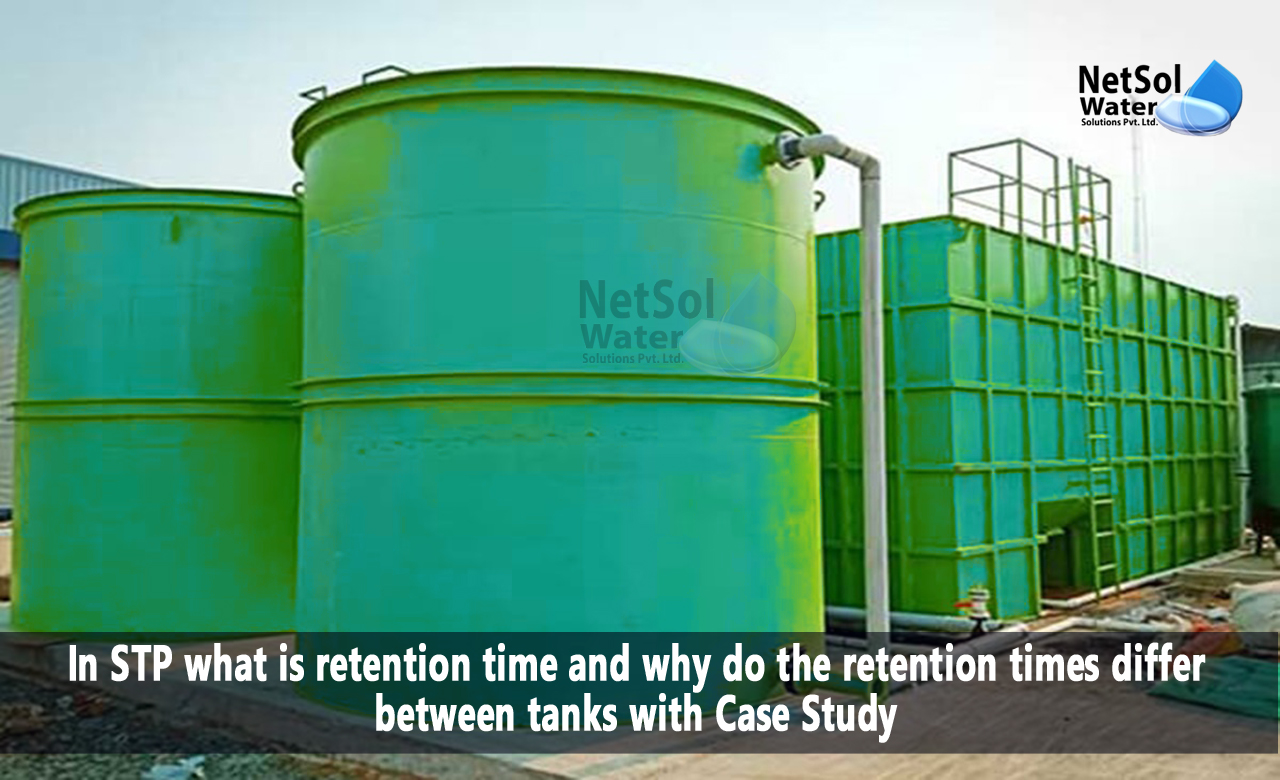Retention time refers to the time that a volume of sewage is held in a pumping installation, pump sump, pipeline, detention basin, or other similar structure. By dividing the holding volume by the discharge flow from the holding structure, one can calculate the retention time.
Long and short wastewater retention times
Long and short wastewater retention times might be advantageous in some circumstances and harmful in others. If the flow or turbulence is insufficient to maintain the solid waste particles in suspension, they may have time to settle during a prolonged retention period.
Longer retention times also permit the occurrence of biological and chemical reactions. Some of these processes, like the oxidation of harmful substances, may be desirable, whilst others may be undesirable (such the generation of H2S in sewer systems or an excessively lengthy sludge retention time during wastewater treatment).
On the other hand, too short retention times might in certain cases be intentional yet result in desired biological or chemical processes (such the breakdown of organic matter) not being able to occur.
The retention duration in pipelines should be assessed and its effects should be taken into account while building a sewer system.
Why does each STP Tank process have a different retention time?
Different compounds possess distinct retention times. The retention period will change for a specific chemical based on:
· The boiling point of the compound: A substance that boils at a temperature greater than that of the column will spend almost all of the time condensed as a liquid at the column's start. High boiling point hence indicates a long retention duration.
· The solubility in the liquid phase: A substance will spend less time being transported by the gas the more soluble it is in the liquid phase. A high retention time is a result of high solubility in the liquid phase.
· Temperature: Higher temperatures tend to excite molecules into the gas phase because they either evaporate more easily or are so energetic that they can no longer be held by the forces of the liquid. Everything in the STPS has shorter retention periods when the temperature is high.
Types of Retention Time
Solid retention time (SRT) and hydraulic retention time (HRT) are the two different types of retention times in an anaerobic digester.
For a suspended-growth anaerobic digester without recycling, the SRT and HRT are same. The SRT and HRT may be very different if the digester uses solids recycling.
Time Required for Solids Retention:
The amount of time the solid portion of wastewater spends in a treatment unit is known as the solids retention time (SRT). It is calculated by dividing the amount of solids held in the reactor by the daily amount of solids released from the reactor:
SRT = V *Cd / Qout* Cout
Where:
Qout is the daily volume discarded,
Cout is the effluent solids concentration,
Cd is the solids concentration,
and V is the digester volume.
When retaining biomass reactors, such as anaerobic biogas settlers and septic tanks, the SRT is greater than the HRT.
Throughout the treatment system, bacterial concentrations are managed by the solids retention time, or SRT. There are more bacteria in the reactor, the greater the SRT. Anaerobic digesters benefit from high SRT levels. High SRT values increase the capacity for removal, lower the volume needed in the digester, and provide buffering capacity in wastewaters and sludges to guard against shock loadings and dangerous compounds.
Hydraulic Retention Time:
The HRT controls the transformation of volatile solids into gaseous products in an anaerobic digester. The HRT's design is based on where the digested sludge will ultimately go. Whether the digested sludge is to be put to land or burned will determine whether the HRT is relatively high or low.
By measuring how long a soluble chemical remains in the bioreactor (measured as the volume of the aeration tank divided by the influent flow rate), the HRT controls the time for absorption and biodegradation in water.
The rate and volume of methane formation are influenced by HRT values. In light of this, an anaerobic digester's operational conditions may include temperature, solids concentration, and the amount of volatile solids in the feed sludge.
Calculation:
The required number of days for retention R is calculated by dividing the effective tank volume (V(g Tank)) by the daily wastewater volume (Vol(g Daily Wastewater)) in gallons.
RDays = V(g Tank) / Vol(g Daily Wastewater)
One day of retention time is required in a 1000 gallon septic tank with an effective tank volume before cleanout of 600 gallons and a family adding 600 gallons of wastewater daily.
This means that we are pushing floating material into the leach field if the wastewater flow is greater than 600 gallons per day or if the sludge and scum levels rise to the point where the tank volume is below 600 gallons.
Do you need an advice or assistance on selecting the best water and waste water treatment unit? We have solutions for all your problems!
Let us now your problem, our experts will make sure that it goes away.
For an assistance or related query,
Call on +91-965-060-8473
Or write us at enquiry@netsolwater.com



